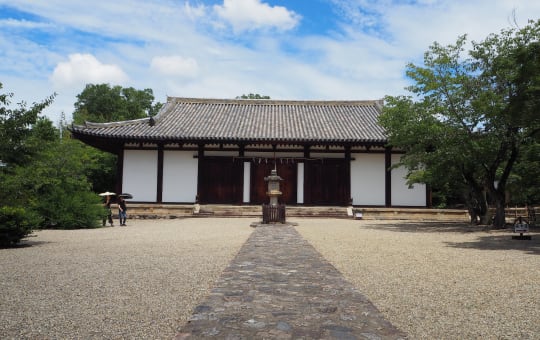Celebrating its 1,300th anniversary, the temple has profoundly influenced Japanese culture
Kofukuji Temple has four national treasure buildings: the five-story pagoda, the three-story pagoda, the Hokuendo, and the Tokondo.
Don't Miss
- The second largest pagoda in Japan
- Appreciate the cultural remains of the Fujiwara clan
- The deer which roam free around Nara park
How to Get There
Nara Park is a short walking distance from the train station. Trains to Nara run regularly from Osaka and Kyoto, as well as other major destinations.
Kofukuji Temple is an easy five-minute walk from Kintetsu Nara Station, or about a 20-minute walk from Nara Station.
If you arrive at JR Nara Station, there is a loop bus which will save you the walk to the park. The number 2 bus or any of the buses bound for Kasuga Taisha will stop at Kencho-mae bus stop, which is a short walk from the temple.
Long history
Kofukuji Temple was built in 669 by the aristocratic and politically powerful Fujiwara family. Later, it was moved to Asuka when the capital was relocated, and was named Umayasakadera Temple. It was moved to Nara when the capital was relocated to Heijo-kyo (present-day Nara), and renamed Kofukuji Temple.
Five-story pagoda
If you like pagodas, you will love Kofukuji Temple. At 50.1meters tall, the five-story pagoda is the second tallest wooden pagoda in Japan, and a symbol of the ancient capital of Nara. The tallest five-story pagoda can be found in neighboring Kyoto .
The pagoda was built around 730, and rebuilt five times after being destroyed by fire. The current pagoda, which dates from around 1426, creates an impressive atmosphere with its long history.
The octagonal Endo Halls
Two of the curiosities of the site are the octagonal halls, which attract many visitors. The Hokuendo was built in 721, and is said to be the most beautiful octagonal hall in Japan. The Nananendo was built about 100 years after the Hokuendo.
The Chukondo is a central building of Kofukuji, and one of the most important. It was a temporary hall for a long time, but in 2000 it was dismantled and restored in the style of its original construction, a process that was completed in 2018.
The statues
Kofukuji contains many extremely valuable documents and treasures from Nara 's history as the capital of Japan. Many of these are displayed in the Kofukuji National Treasure Museum.
In addition to gilded images of Buddha, various masterpieces are enshrined, including a dry-laquered statue of Ashura, and the bronze head of Yakushi Nyorai, the Buddha of Medicine.
As a valuable repository of treasures including Buddhist sculptures, paintings, artifacts, books, old documents, and other objects that tell the history of Kofukuji, you can expect to spend two to three hours exploring the temple.
* The information on this page may be subject to change due to COVID-19.






























































